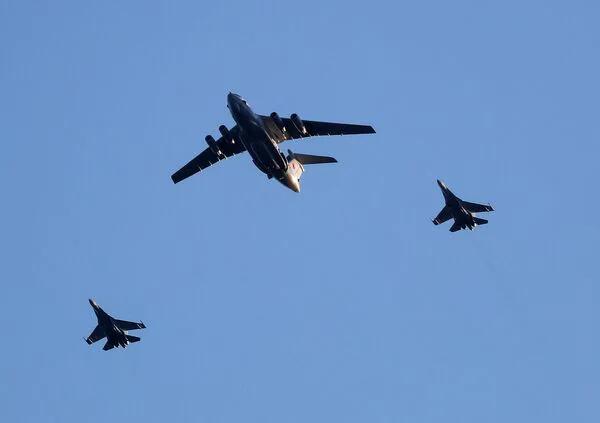Common sense and deviation in air o...
04
12
Common sense and deviation in air operations, why is the activity of the Russian Air Force unusually low?
Missile trails in the skies of Ukraine's capital Kyiv (file photo, March 5, 2022, photo: Reuters/Aflo)

(Kuon Nuta: novelist, military critic, former SDF officer) More than 10 days have passed since Russia began its invasion of Ukraine. Before the war, every military expert, myself included, predicted that Russia would have air superiority over Ukraine. It was expected that Ukrainian air activity would end in a matter of days, even hours. However, the Ukrainian Air Force is still active today. [See photos in this article] The Russian Air Force's "A-50" early warning and control aircraft and "Su-27" fighters Of course, the situation seems dire. The Ukrainian government is asking NATO to establish a no-fly zone and to provide more powerful anti-aircraft weapons than MANPADS (Portable Air Defense Missile Systems). The reason why they do not deny the rumors of dubious "Ghost of Kiev" (a pilot of the Ukrainian Air Force who is said to have shot down many Russian planes in air defense) is probably to raise their fighting spirit. However, so far, the Ukrainian air battle has continued to be a miracle for the Ukrainian side. Therefore, in the following, I would like to summarize the air warfare in Ukraine so far, consider the reasons for the Ukrainian military's good fight, and present future prospects. ■ The activities of the Russian Air Force are sluggish As of March 6, according to the announcement by the Ukrainian side, the Russian military's aviation and air defense losses are as follows.・Aircraft: 44 ・Helicopters: 48 ・UAVs (unmanned aerial vehicles): 4 ・Air defense systems: 21 The Russian military has gathered 500 fighter/fighter-bombers and 50 strategic bombers around Ukraine. was In terms of attrition rate, it seems reasonable to assume that the damage is about the same as the Russian army invading on the ground, but air power is expensive. I would say that it has suffered considerable damage.
However, from the point of view of the Russian military, securing air superiority should be essential to gain an advantage in the battlefield on the ground. OCA (Offensive counter air), which eliminates the Ukrainian Air Force, even if there is damage, and SEAD/DEAD (Suppression/Destruction of Enemy Air Defense), which destroys the air defense network, should be completed with the highest priority. I should have. If that had been done, there is no doubt that the UAV Bayraktar TB2 would not have destroyed a large number of vehicles. In fact, 6 aircraft and 3 helicopters in the above figures are within 24 hours when the latest data was updated. It is the result of pushing and attacking unreasonably. However, the Russian military's aviation activities have not only been unsuccessful, but there have been no moves to carry them out. This is far from the common sense of air operations since the Gulf War. From the start of the battle, I had been closely watching the situation, and on the day of the battle, I found this strange and tweeted as follows. It seems that overseas experts felt the same way, and there was an article reporting that it was "mysterious". That's how unusual it is. Not only was the Ukrainian Air Force's resistance strong, but it seemed as if the Russian Air Force had no intention of aggressively attacking it.
Page 1/5


![[Kill personally developed games] Top class in app history! Too beautiful water puzzle "a [Q] ua" | Famitsu App for smartphone game information [Kill personally developed games] Top class in app history! Too beautiful water puzzle "a [Q] ua" | Famitsu App for smartphone game information](https://website-google-hk.oss-cn-hongkong.aliyuncs.com/drawing/article_results_7/2022/3/3/66755df992ff2d2b1e1ab43844ef9f88_0.jpeg)





![[Latest in 2021] 10 recommended seat covers for cars!If you want to improve the texture and functionality of the car, choose the mounting type and material. [Latest in 2021] 10 recommended seat covers for cars!If you want to improve the texture and functionality of the car, choose the mounting type and material.](https://website-google-hk.oss-cn-hongkong.aliyuncs.com/drawing/article_results_7/2022/3/3/e5b44589e77141f3a633189165fb6f60_0.jpeg)